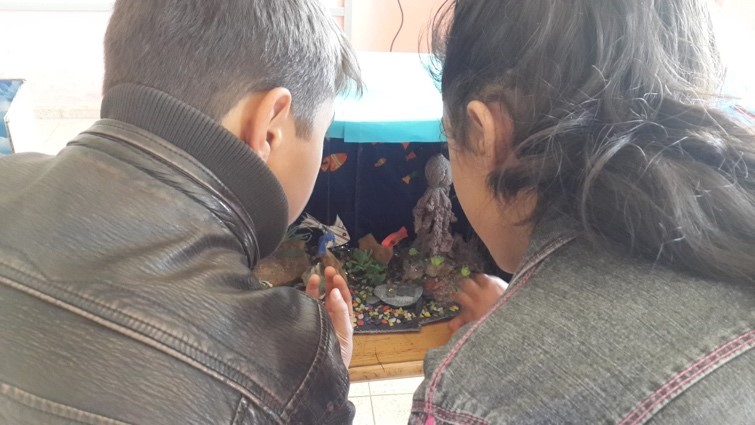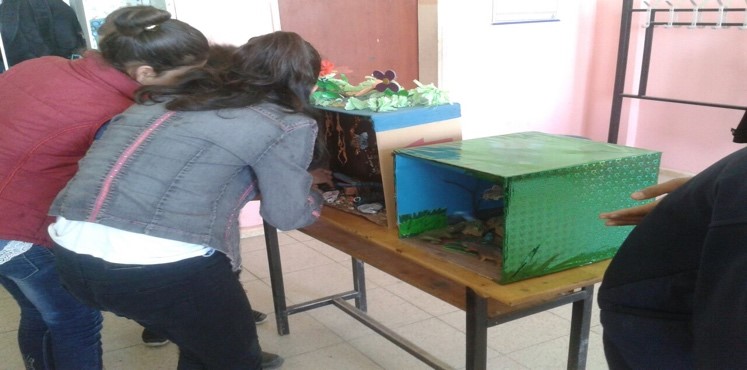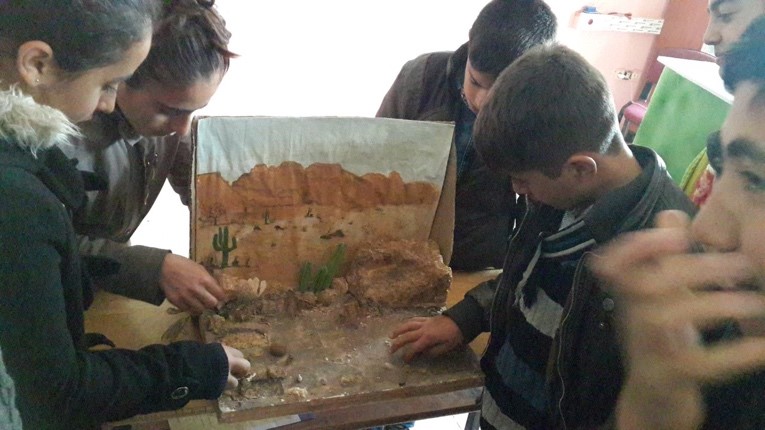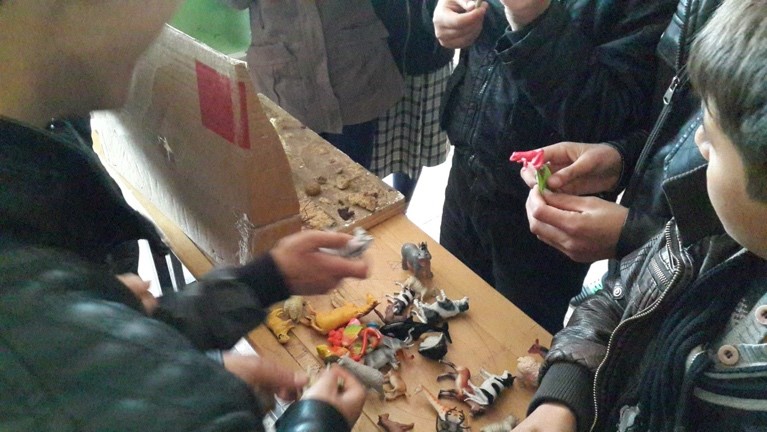Asia-Pacific Forum on Science Learning and Teaching, Volume 18, Issue 1, Article 2 (Jun., 2017) |
In the study an experimental design including pre-test and post-tests was employed to determine the differences in students’ academic achievement in the control and the experimental groups. This design was selected because it controls many variables inflecting its external and internal validity. The experimental design was compared to a control group using conventional teaching method with the experimental group using dioramas.

Picture 1. Students working with dioramas.
Picture 2. Students working with dioramas.
Picture 3. Students working with dioramas.
Picture 4. Students working with dioramas.
In the control group, the teacher was asked to teach in the way she does in general that included lecturing and questions and answers. The same science teacher taught the both groups during the study.
Due to the complication of the school program students could not be randomly selected for the experimental and the control groups. Instead, two of the 5 seventh grade classes were randomly selected as a control and an experimental group. In total, 49 seventh grade students at Fatih Secondary School in Diyarbakır participated in the study. There were 25 students (male:15, female:10) in the experimental group and 24 students (male:14, female:10) in the control group. The experimental study was carried out 6 weeks (24 hours) in spring semester during 2015-2016 academic year.
The affects of dioramas and gender were used as independent variables while academic achievement and science learning skills were treated as dependent variables in the study.
In the study, pre-and post-tests for academic achievement and Science Learning Skills scale were used to collect the data. The achievement tests were prepared by the science teacher cooperated in the study and the researcher. The question on the test were based on the learning outcomes for grade 7, outlined by the national ministry of education. The test included 30 questions. Two teacher educators and three science teachers scrutinised the test for the validity. The test was used with the 8 grade students, who already study the topic, to calculate the item difficulty and discrimination. 5 items with low difficulty and low discrimination were left out and the final test included 25 questions. The reliability of the multiple-choice questions was calculated by using split half technique. Right answers were given 1 point and wrong answers were given 0 point. The reliability co-efficient for the half of test, r: .681 and for the whole test with Spearman-Brown formula was, r: .810.
The Science Learning Scale test was developed by Chang et al. (2011). The questionnaire was translated into Turkish by Şenler (2014) with appropriate analysis for reliability and validity. Cronbach alpha value was calculated as .92 for this study.
The data was analysed through SPSS 21.0. Comparisons of achievement test results for experimental and control groups were carried out by using independent t-test. Differences between genders’ responses were calculated by using independent t-test. The pre-test results show both experimental and control group students having similar results for academic readiness and similar level for science learning skill (Table I).
Table I. The comparison of 7th grade students’ pre-test results for academic achievement and science learning skills.
Groups
Variable
N
X̄
SD
Results
Control Experimental
Academic achievement
24
12.37
4.753
t: -.768
sig: .447
p>0.0525
13.44
4.950
Control Experiments
Science learning skills
24
3.93
.505
t:-1.186
sig: .242
p>0.0525
4.11
.573



